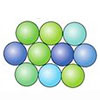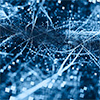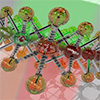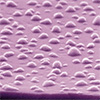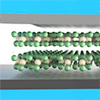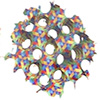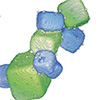3D computer graphics
3D computer graphics, sometimes called CGI, 3DCG or three-dimensional computer graphics (in contrast to 2D computer graphics), are graphics that use a three-dimensional representation of geometric data (often Cartesian) that is stored in the computer for the purposes of performing calculations and rendering 2D images. The resulting images may be stored for viewing later (possibly as an animation) or displayed in real time. Unlike 3D film and similar techniques, the result is two-dimensional, without the illusion of being solid.
3D computer graphics rely on many of the same algorithms as 2D computer vector graphics in the wire-frame model and 2D computer raster graphics in the final rendered display. In computer graphics software, 2D applications may use 3D techniques to achieve effects such as lighting, and similarly, 3D may use some 2D rendering techniques.
The objects in 3D computer graphics are often referred to as 3D models. Unlike the rendered image, a model's data is contained within a graphical data file. A 3D model is a mathematical representation of any three-dimensional object; a model is not technically a graphic until it is displayed. A model can be displayed visually as a two-dimensional image through a process called 3D rendering, or it can be used in non-graphical computer simulations and calculations. With 3D printing, models are rendered into an actual 3D physical representation of themselves, with some limitations as to how accurately the physical model can match the virtual model.
Check out these latest Nanowerk News:

